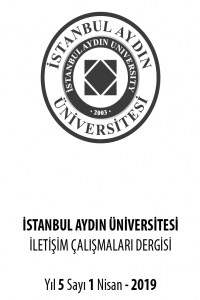Öz
Women’s seclusion and hegemonic oppression on the subjugation of
women can alternatively be well understood in contrastive analysis of how
masculinities and femininities come in a clash in public spheres and urban
spaces. In this regard, this text will provide a sequence of ethnographic
analyses on urban events and celebrations, public spaces and gendered
interactions through non-verbal marks so that what’s deemed as socially
appropriate or improper are vividly presented. The main objective of
this compact ethnographic analysis is that the subordinate femininities
must be unearthed so that there could be a hope for a social cessation of
internalization of both the seclusion and subjugation of female members
of the subject society. The case instances are drawn from such a society,
Turkey, which has a fluctuant politics of gender and where the society
is stigmatized with the ongoing repercussions of post-colonial identity
collision.
Anahtar Kelimeler
Gender studies Cultural anthropology Non-Verbal communication
Kaynakça
- Taste. London, Routledge. 2. Kandiyoti, Deniz. (2003). “The Paradoxes of Masculinity: Some Thought on Segregated Societies.” Dislocating Masculinity: Comparative Ethnographies, by Andrea Cornwall and Nancy Lindisfarne , Routledge, 196-212. 3. Kandiyoti, Deniz A. (1987). Emancipated but Unliberated? Reflections on the Turkish Case. Feminist Studies 13 (2): p. 317-338. 4. Mai Ghoussoub, Emma Sinclair-Webb. (2006). “Imagined Masculinities: Male Identity and Culture in the Modern Middle East.” Imagined Masculinities: Male Identity and Culture in the Modern Middle East, Saqi, pp. 273–280. 5. Massey, Doreen. (1994). Space, Place, and Gender. University of Minnesota Press, p. 6. 6. Özbay, Cenk. (2016). “Men Are Less Manly, Women Are More Feminine’: The Shopping Mall as a Site for Gender Crisis in Istanbul.” Gender and Sexuality in Muslim Cultures, by Özyeğin Gül, Routledge, Taylor Et Francis Group, pp. 81–82. 7. Stephen W. Littlejohn, Karen A. Foss, editors. (2009). Encyclopedia of Communication Theory. Thousand Oaks, Calif.: Sage, Print. 8. The Qur’an (Oxford World’s Classics). (2008). Trans. M. A. S. Abdel Haleem. USA: Oxford University Press. 9. Trümper, Monika. (2015). “Gender and Space, ‘Public’ and ‘Private.’” A Companion to Women in the Ancient World, Wiley Blackwell, 288-303. 10. Wacquant, L. (2005). Habitus. International Encyclopedia of Economic Sociology. J. Becket and Z. Milan. London, Routledge.p. 316. 11. Wood, Julia T. (2005). Gendered lives: communication, gender & culture (6th ed.). Thomson/Wadsworth, Belmont, Calif.
Ayrıntılar
| Birincil Dil | İngilizce |
|---|---|
| Konular | İletişim ve Medya Çalışmaları |
| Bölüm | Makaleler |
| Yazarlar | |
| Yayımlanma Tarihi | 1 Nisan 2019 |
| Gönderilme Tarihi | 15 Ocak 2019 |
| Kabul Tarihi | 20 Mart 2019 |
| Yayımlandığı Sayı | Yıl 2019 Cilt: 5 Sayı: 1 |
All site content, except where otherwise noted, is licensed under a Creative Common Attribution Licence. (CC-BY-NC 4.0)

